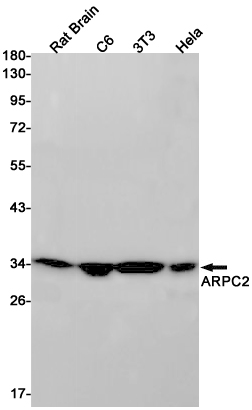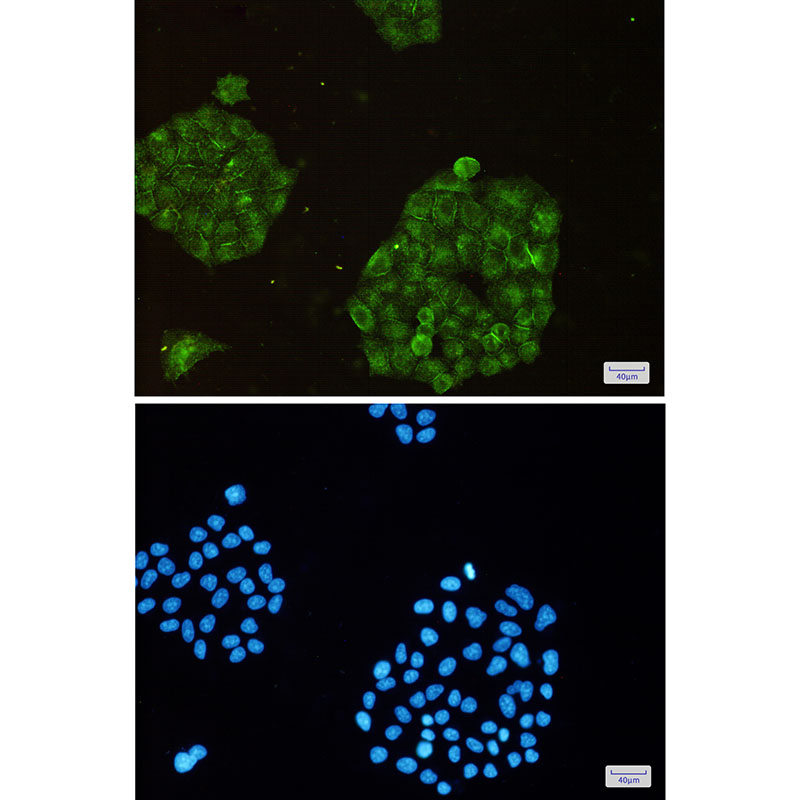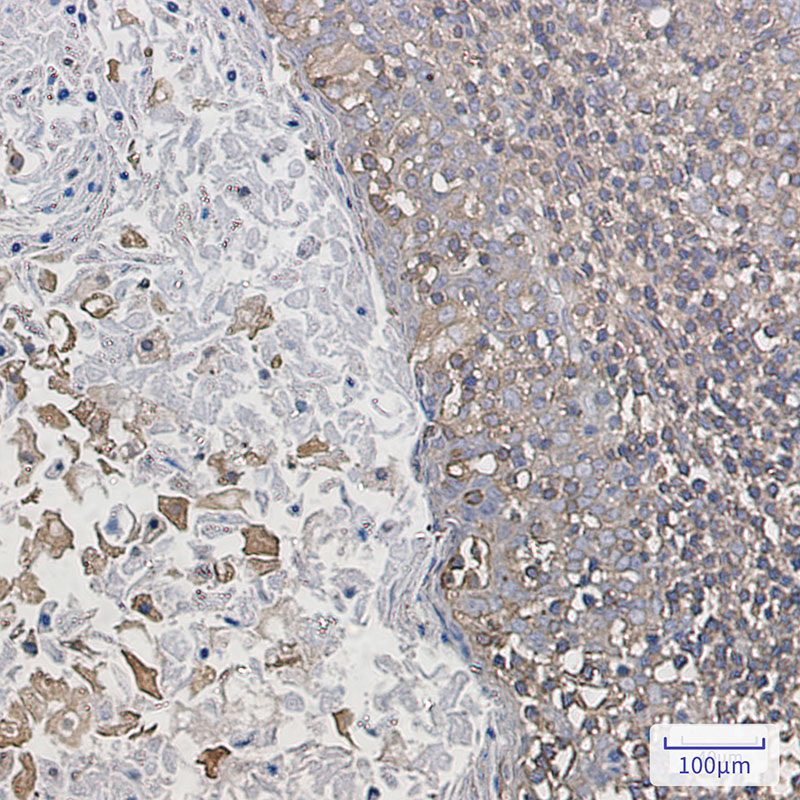


| WB | 咨询技术 | Human,Mouse,Rat |
| IF | 1/20 | Human,Mouse,Rat |
| IHC | 1/50-1/100 | Human,Mouse,Rat |
| ICC | 1/50-1/200 | Human,Mouse,Rat |
| FCM | 咨询技术 | Human,Mouse,Rat |
| Elisa | 咨询技术 | Human,Mouse,Rat |
| Aliases | ARC34; PRO2446; p34-Arc; PNAS-139 |
| Entrez GeneID | 10109 |
| WB Predicted band size | Calculated MW: 34 kDa; Observed MW: 34 kDa |
| Host/Isotype | Rabbit IgG |
| Antibody Type | Primary antibody |
| Storage | Store at 4°C short term. Aliquot and store at -20°C long term. Avoid freeze/thaw cycles. |
| Species Reactivity | Human,Mouse,Rat |
| Immunogen | A synthetic peptide of human ARPC2 |
| Formulation | Purified antibody in TBS with 0.05% sodium azide,0.05%BSA and 50% glycerol. |
+ +
以下是关于ARPC2抗体的3篇参考文献及其摘要概括:
1. **文献名称**:*"ARP2/3 complex activity is necessary for efficient invasion of Listeria monocytogenes"*
**作者**:Welch, M.D., et al.
**摘要**:研究利用ARPC2抗体抑制ARP2/3复合体功能,发现其缺失会显著降低李斯特菌入侵宿主细胞的效率,表明该复合体在病原体介导的肌动蛋白重组中起关键作用。
2. **文献名称**:*"The ARP2/3 complex is essential for lamellipodia formation and directional migration"*
**作者**:Suraneni, P., et al.
**摘要**:通过ARPC2抗体敲低实验,证实ARP2/3复合体是细胞板状伪足形成和趋化迁移的必要条件,其缺失导致细胞运动能力丧失及细胞骨架结构紊乱。
3. **文献名称**:*"Regulation of actin filament nucleation by the ARP2/3 complex and formins"*
**作者**:Mullins, R.D., et al.
**摘要**:探讨ARPC2在ARP2/3复合体介导的肌动蛋白成核机制中的角色,利用抗体阻断实验揭示其与formin蛋白的协同作用对细胞骨架动态调控的影响。
4. **文献名称**:*"ARPC2 dysfunction leads to Wiskott-Aldrich syndrome-like phenotypes"*
**作者**:Kumar, V., et al.
**摘要**:临床研究发现ARPC2基因突变导致免疫缺陷及血小板异常,通过抗体检测发现患者细胞中ARP2/3复合体功能受损,揭示其与WAS综合征的关联机制。
这些文献覆盖了ARPC2抗体在基础研究、病原体感染、细胞迁移及疾病机制中的应用与发现。
The ARPC2 antibody is a crucial tool in studying the Actin-Related Protein 2/3 Complex Subunit 2 (ARPC2), a key component of the Arp2/3 complex. This evolutionarily conserved seven-subunit complex plays a central role in nucleating branched actin filament networks, which are essential for fundamental cellular processes such as cell motility, membrane trafficking, and cytokinesis. ARPC2. along with ARPC1. forms the structural backbone of the Arp2/3 complex, stabilizing its conformation and regulating its actin-nucleating activity in response to cellular signals.
Researchers utilize ARPC2 antibodies primarily to investigate the expression, localization, and functional dynamics of the Arp2/3 complex in diverse biological contexts. These antibodies are widely applied in techniques like Western blotting, immunofluorescence, and immunoprecipitation to explore ARPC2's role in physiological processes (e.g., immune cell migration, neuronal development) and pathological conditions, including cancer metastasis and invasive diseases where aberrant actin remodeling occurs. Commercially available ARPC2 antibodies are typically developed in hosts like rabbits or mice, with options for monoclonal or polyclonal formats. Validation often includes knockout cell line controls to ensure specificity. When selecting an ARPC2 antibody, considerations include species reactivity (human, mouse, rat), compatibility with specific experimental applications, and cross-reactivity data provided by manufacturers. Recent studies also employ these antibodies in advanced techniques such as super-resolution microscopy to dissect the nanoscale organization of actin networks.
×